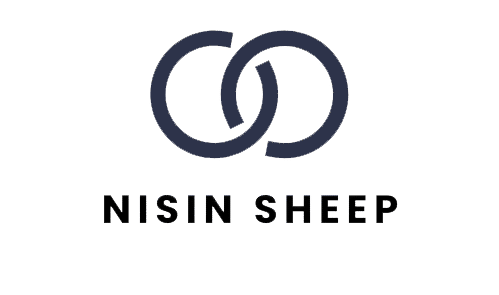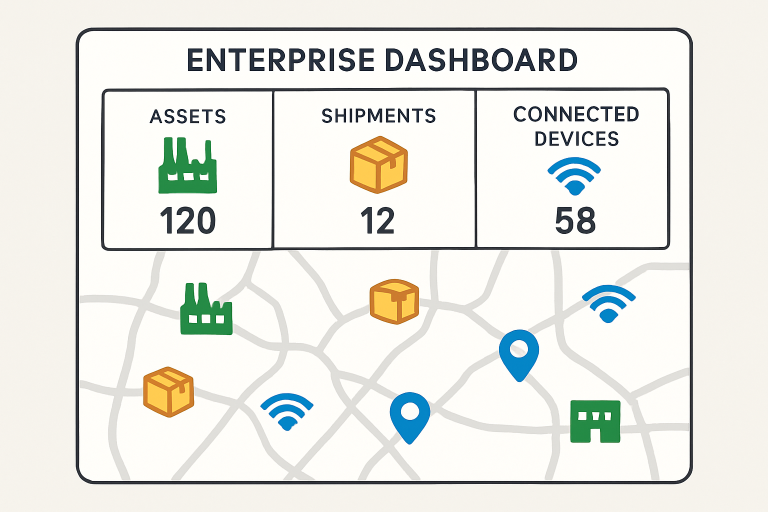Key Takeaways
- Real-time tracking technologies offer immediate visibility into operations, enhancing efficiency and responsiveness.
- Integration with AI and machine learning enables predictive analytics, leading to proactive decision-making.
- Adoption of these technologies can result in significant cost savings and improved customer satisfaction.
Table of Contents
- Enhancing Supply Chain Visibility
- Predictive Maintenance and Asset Management
- Intelligent Process Automation
- Real-Time Data Analytics for Informed Decision-Making
- Smart Workspaces for Enhanced Collaboration
- Advanced Cybersecurity Measures
- Green Technology Integration
- Workforce Augmentation with AI and Machine Learning
In today’s dynamic business environment, enterprises are increasingly investing in technologies that provide actionable data in the moment. Solutions that deliver real-time visibility in supply chain operations are rapidly becoming game changers, helping organizations quickly adapt to evolving challenges and market demands. As digital transformation accelerates, the ability to monitor every facet of operations in real time is transforming the landscape of modern business.
This immediacy empowers companies to avoid costly disruptions, optimize resources, and deliver superior customer experiences. Enterprises that leverage real-time tracking technologies not only streamline internal processes but also build a resilient foundation for future growth. The fusion of IoT devices, AI-driven analytics, and smart automation enables companies to align supply, demand, and resources with unprecedented precision.
When organizations maintain a constant pulse on logistics, assets, and operations, they can swiftly address bottlenecks and seize opportunities before the competition. Industries that once relied on retrospective reporting now harness predictive insights and intelligent automation as core drivers of their business models, a shift that is redefining operational excellence.
Enhancing Supply Chain Visibility
Enterprises are harnessing real-time tracking tools to inject agility and transparency into supply chain operations. Powered by IoT sensors and robust data platforms, these technologies enable seamless monitoring of shipments, inventory, and vendor performance from origin to destination. The result is greater demand forecasting accuracy, reduced stockouts, and proactive disruption management.
With constant updates on goods in transit and environmental conditions, businesses gain clarity over every link in the supply chain. Enhanced supply chain visibility supports regulatory compliance and strengthens relationships with partners by ensuring critical data is transparent and accessible. It becomes easier to reroute resources, avoid delays, and elevate customer trust.
Predictive Maintenance and Asset Management
The transition from scheduled to predictive maintenance is a hallmark of digital enterprise transformation. IoT-connected equipment transmits real-time performance data to centralized AI platforms, where anomalous patterns can signal impending failures. Maintenance teams receive alerts before breakdowns occur, allowing them to schedule repairs at optimal times and significantly reduce unplanned downtime. According to FacilitiesNet, this approach also facilitates smarter allocation of capital, as maintenance budgets can be planned with greater accuracy. Over the lifecycle of assets, organizations benefit from reduced repair costs, longer equipment life, and improved safety.
Intelligent Process Automation
Intelligent Process Automation (IPA) is taking enterprise efficiency to new heights. By intertwining robotic automation, AI, and machine learning, IPA enables companies to automate repetitive tasks such as order processing, invoicing, and data entry. This not only accelerates throughput but also drastically lowers the incidence of human error. According to TechTarget, IPA represents the convergence of multiple automation technologies to streamline complex business processes.
The real benefit of IPA, however, lies in its ability to unlock human potential. As mundane activities are automated, employees can focus on strategy, creativity, and value-generating tasks. In a climate where talent is at a premium, intelligent automation becomes both a lever for cost reduction and a catalyst for innovation.
Real-Time Data Analytics for Informed Decision-Making
Data-driven decision-making is the engine of competitive advantage in today’s enterprise landscape. Next-generation analytics solutions process high volumes of structured and unstructured data from disparate sources, transforming raw numbers into actionable intelligence in seconds. This empowers leaders to pivot quickly—responding to market shifts, identifying trends, and capitalizing on fleeting opportunities.
With dashboards that update in real time, all levels of the organization—from the C-suite to the shop floor—are equipped to make informed choices that drive growth and efficiency. This democratization of insights ensures alignment across departments and sustains enterprise agility.
Smart Workspaces for Enhanced Collaboration
Collaboration is central to enterprise innovation, and smart workspace technologies are accelerating this shift. IoT-enabled meeting rooms, AI-powered scheduling, and real-time messaging platforms are dissolving physical and organizational barriers. Teams dispersed across continents can ideate seamlessly, share documents, and hold virtual discussions with the same fluidity as in-person interactions.
Enhanced connectivity and collaboration tools not only increase productivity but also foster a culture of continuous improvement. Real-time feedback, immediate access to shared files, and automated workflow management empower cross-functional teams to outperform expectations.
Advanced Cybersecurity Measures
The digitization of operations exposes organizations to evolving cyber threats, making robust security a business imperative. Real-time cybersecurity monitoring powered by AI helps enterprises detect and neutralize threats before data breaches or system disruptions occur. Technologies like blockchain add another layer of protection, providing tamper-proof records for transactions and sensitive communications.
Machine learning algorithms analyze network traffic patterns, flag anomalies, and automate incident responses—allowing organizations to respond rapidly and avoid costly damages. Ensuring digital assets are guarded with the latest cybersecurity advances is critical to sustaining trust in a hyper-connected era.
Green Technology Integration
The push for sustainability is reshaping enterprise objectives. Organizations are integrating green technologies such as intelligent energy management systems, smart lighting, and AI-driven climate control solutions to cut energy usage without compromising productivity. These initiatives yield dual benefits: reducing operational costs and advancing environmental stewardship.
Sustainable operations enhance brand reputation and are increasingly prioritized by regulators, investors, and consumers alike. Future-ready enterprises lead by example, aligning profit with a commitment to planetary well-being.
Workforce Augmentation with AI and Machine Learning
AI and machine learning applications are transforming workforce productivity and precision. From automated scheduling to advanced simulations, employees are empowered with tools that remove ambiguity and support data-driven actions. This augmentation enables teams to excel in complex environments, scale operations efficiently, and deliver high-quality outcomes in less time.
By integrating real-time tracking technologies, companies are well-positioned to achieve greater efficiency, resilience, and sustained competitiveness. Embracing these innovations is not just a strategic choice but an operational necessity as enterprises navigate an increasingly data-driven world.

